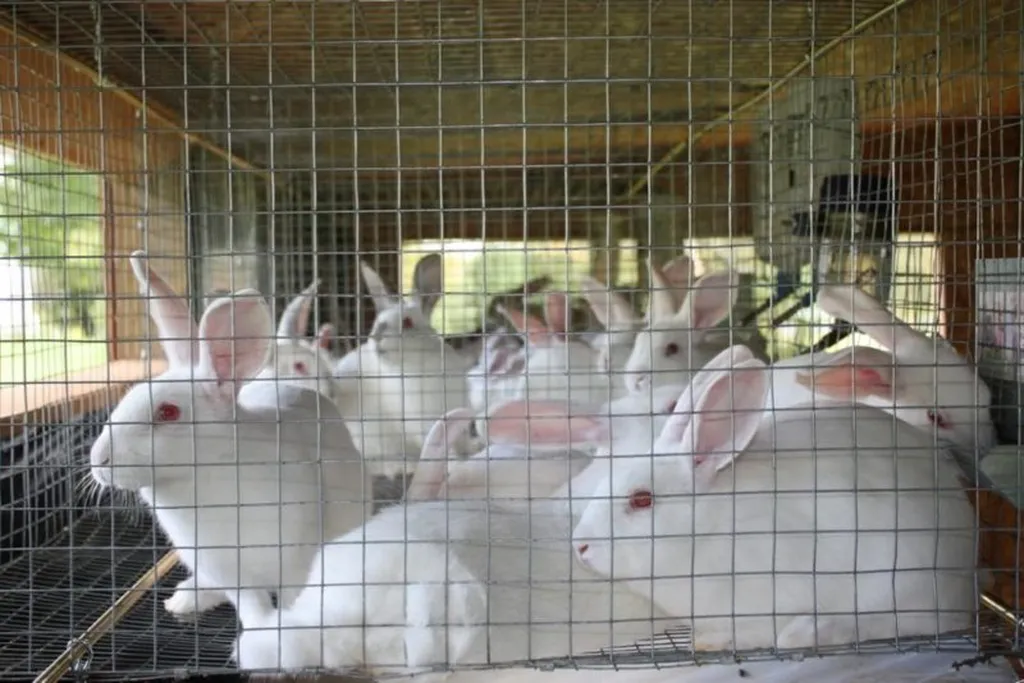In the quest for sustainable and cost-effective animal feed solutions, a recent study published in the journal *Animal Science* (previously known as *Животновъдни науки*, which translates to *Animal Sciences*) has shed light on an unconventional yet promising resource: sun-dried bovine rumen contents (SDBRC). The research, led by Brian Sibanda from the Department of Animal Science and Rangeland Management at Lupane State University in Zimbabwe, explores the potential of incorporating SDBRC into rabbit diets, offering insights that could resonate across the agricultural sector.
The study focused on New Zealand White rabbits, a popular breed known for its rapid growth and high-quality meat. Sibanda and his team divided the rabbits into three groups: a control group fed standard rabbit pellets, and two experimental groups receiving pellets supplemented with 30% and 40% SDBRC. Over a 12-week period, the researchers meticulously monitored the rabbits’ growth, feed intake, and carcass quality.
The results were intriguing. Rabbits fed with 30% SDBRC showed no significant differences in growth compared to the control group, suggesting that this level of inclusion could be a viable alternative feed option. However, when the SDBRC content was increased to 40%, the rabbits’ live weight gain and final weights were significantly lower. “This indicates that while SDBRC can be a beneficial supplement, there is a threshold beyond which it may negatively impact growth,” Sibanda explained.
The study also revealed that parameters such as total feed intake, feed conversion ratio, and dressing percentage remained unaffected by the dietary variations. Moreover, linear body measurements like heart girth, body length, and abdominal circumference showed no significant differences across the treatments. Carcass weight, however, was notably lower in the 40% SDBRC group compared to the control and 30% SDBRC groups.
Sibanda’s research highlights the potential of SDBRC as a sustainable feed ingredient, particularly up to 30% inclusion. This finding could have significant implications for the agricultural sector, especially in regions where feed resources are scarce or expensive. By utilizing bovine rumen contents, farmers could reduce feed costs and minimize waste, contributing to a more circular and sustainable agricultural system.
The study’s findings also open up avenues for further research. As Sibanda noted, “Understanding the optimal levels of SDBRC inclusion and its long-term effects on animal health and productivity will be crucial for its widespread adoption.” Future studies could explore the nutritional composition of SDBRC in greater detail and investigate its potential benefits for other livestock species.
In the broader context, this research aligns with the growing global emphasis on sustainable agriculture and resource efficiency. As the world grapples with the challenges of climate change and food security, innovative solutions like SDBRC could play a pivotal role in shaping the future of animal husbandry. By turning what was once considered waste into a valuable resource, farmers and researchers alike can contribute to a more sustainable and resilient agricultural sector.
As the agricultural industry continues to evolve, studies like Sibanda’s serve as a reminder of the importance of exploring unconventional solutions. The journey towards sustainability is fraught with challenges, but with each new discovery, the path becomes a little clearer. And in the case of SDBRC, the future looks promising indeed.

